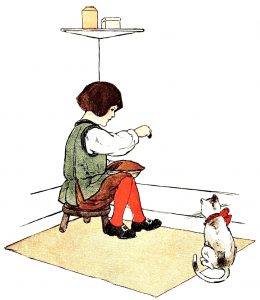
Origins and Meaning
The earliest known version of Little Jack Horner was published in the year 1725. It was not until the 19th century that scholars started to decipher the true meaning of the rhyme. King Henry VIII was trying to separate from his first wife and received a lot of flack for it from the church. The king made himself the leader of the Church of England and declared England a Protestant country so that he was able to separate from his wife and marry someone else. That’s when Jack Horner comes in, offering the king 12 Christmas pies as a bribe. Along the way, Jack stuck his thumb into the pie and took out a plum.
More Little Jack Horner History and Meaning
During Little Jack Horner’s history, the rhyme began to grow in popularity during the early 18th century. The rhyme was referenced frequently, such as in Don Juan and Thomas Love Peacock novels. Jack Horner was actually named Thomas Horner, but the name was changed to better fit in with the rhyme. The pie was used as a metaphor, representing a concealer for significant documents. The rhyme also has religious themes and undertones, referencing the Catholic religion.
In Present Culture
Little Jack Horner is a popular nursery rhyme loved and recited by young kids. It’s especially popular around the holidays. The rhyme has changed through history, but the lyrics and melody modernized into one common song heard today.
Little Jack Horner sat in a corner,
Eating a Christmas pie.
He put in his thumb,
And pulled out a plum,
And said, “What a good boy am I.”